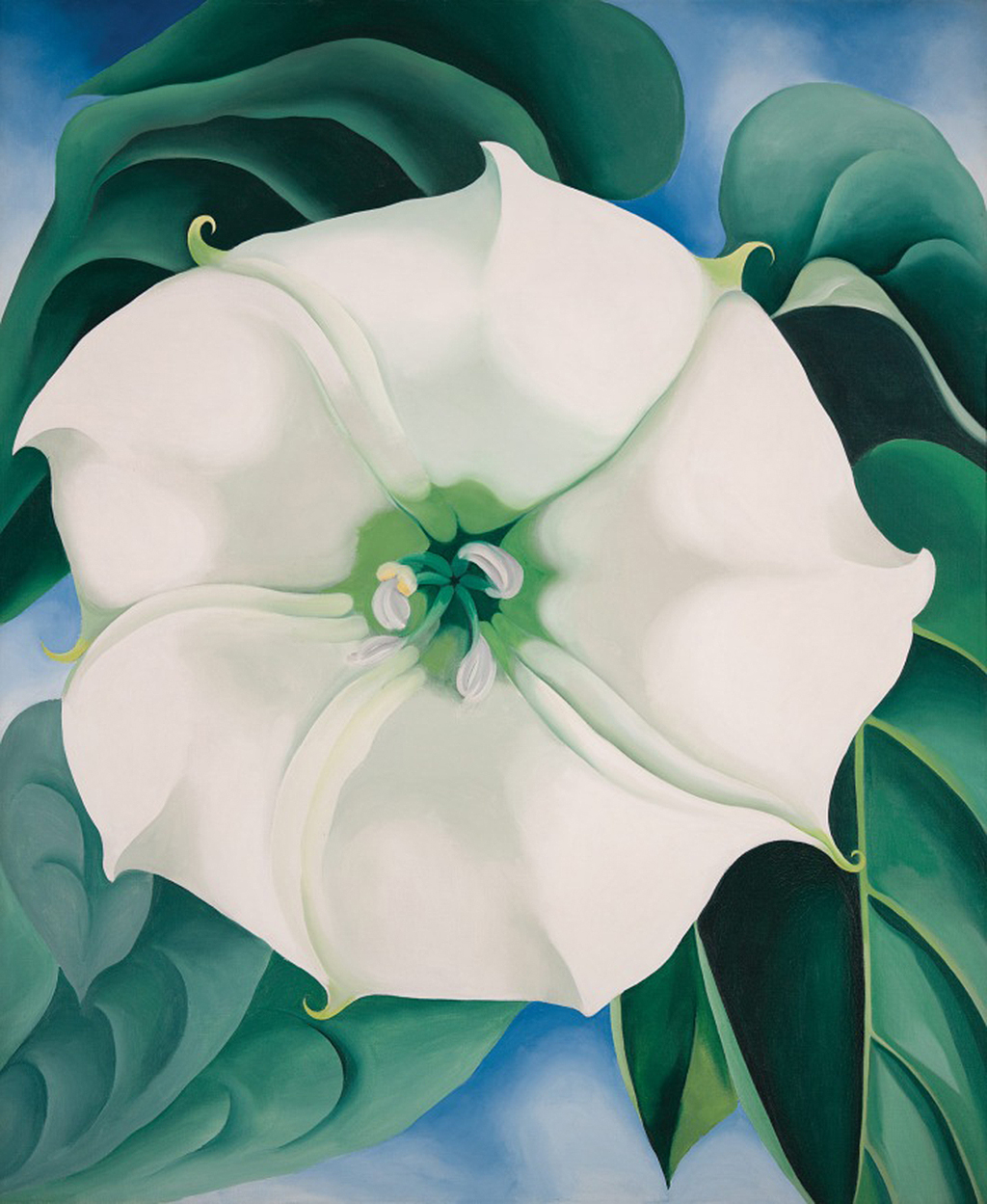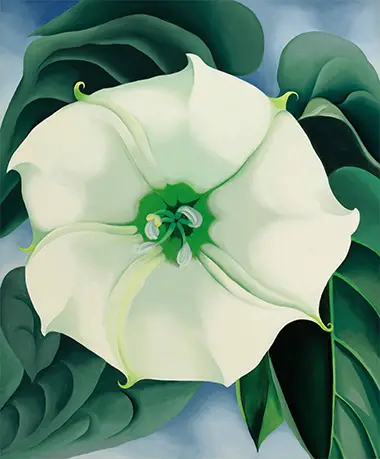The fresh beauty of the flowers was emphasised with a bright, simplified palette and rhythmic treatment of light and shadow. The significance of this painting within the career of O'Keeffe is underlined by how it was chosen as the centerpiece to a large artist retrospective at the Tate Modern, London in 2016. That exhibition drew in millions of visitors and helped to promote her work to those who perhaps were previously unaware of it. It is much rarer for art fans in Europe to be able to see her work first hand than in her native US, where most of her paintings remain in ownership.
The Tate displayed around 100 of her original works, covering the variety of content that she used during her life, from over-sized flowers, to animal bones and skulls and landscapes of New Mexico. Her portraits of New York skyscrapers were also included. The prominence of this major international art venue ensured that they were able to put together the largest Georgia O'Keeffe exhibition ever seen outside the United States. The stunning impact of Jimson Weed made it the ideal figurehead for the collection, as well as the publicity that had surrounded it over recent years. It is believed that O'Keeffe, a keen gardener, actually had some of this plant flowering in her own garden and the choice of it for the exercise room of her client was to encourage others to 'unfurl' themselves.
She was certainly not the first artist to have found a passion in gardening. Many have found a connection between artistic creativity and also the enjoyment of being at one with nature, with most artists in urban areas being restricted to gardens and local parks. Perhaps the movement in which this link was strongest would be in the Impressionist movement, with both Claude Monet and Gustave Caillebotte famously being green-fingered. The former would put together the setting from which he would depict both his water lilies as well as a Japanese bridge. Those from wealthy settings would perhaps be able to escape the city for holidays and weekend trips, maybe even having their own second home out in the countryside. Georgia O'Keeffe was always someone who would seek out items close by to use in her work, some of which would be in her garden, and others that would be left in her local area.
Compositions of highly magnified natural forms are Georgia O'Keeffe's signature style. Examples of this on this website include Oriental Poppies, The White Calico Flower, Petunias and Red Canna, amongst others. She once said that she painted them so big so that even busy New Yorkers would stop and see flowers in the way that she did. O'Keeffe was also recognised for her paintings of New York skyscrapers and New Mexico landscapes, and was known as 'the Mother of American Modernism'. The movement began at the start of the twentieth century. It was marked by the exploration of different techniques and artistic expression. Georgia O'Keeffe was known as a painter who pushed the boundaries of American art and also helped to push the merits of women within art, many of whom had been ignored for many centuries and were only now starting to receive a fair chance of success.
It is important to remember that this painting is known as Jimson Weed / White Flower No. 1, as the artist also produced another arrangement of the same flower, which was titled specifically as Jimson Weed. The latter was painted it in 1936 and it is now owned by the Indianapolis Museum of Art. It captures several flower heads together in the same composition, where as the version found in this page concentrates on one flower head only and places it centrally, zoomed in to cover the full width of the canvas. It's accompanying leaves cover most of the rest of the scene, with subtle shadows added to increase a feeling of contour across those thicker elements. Behind the flower is a simple blue and white background which resembles a clear summer's day. Most viewers of this painting would not have seen a flower is as much detail as this, normally glancing at something beautiful within a field or garden, and then moving on. The artist's use of detail forces us to pause and look just a little longer, helping us to notice features that otherwise we would have over looked.
location

